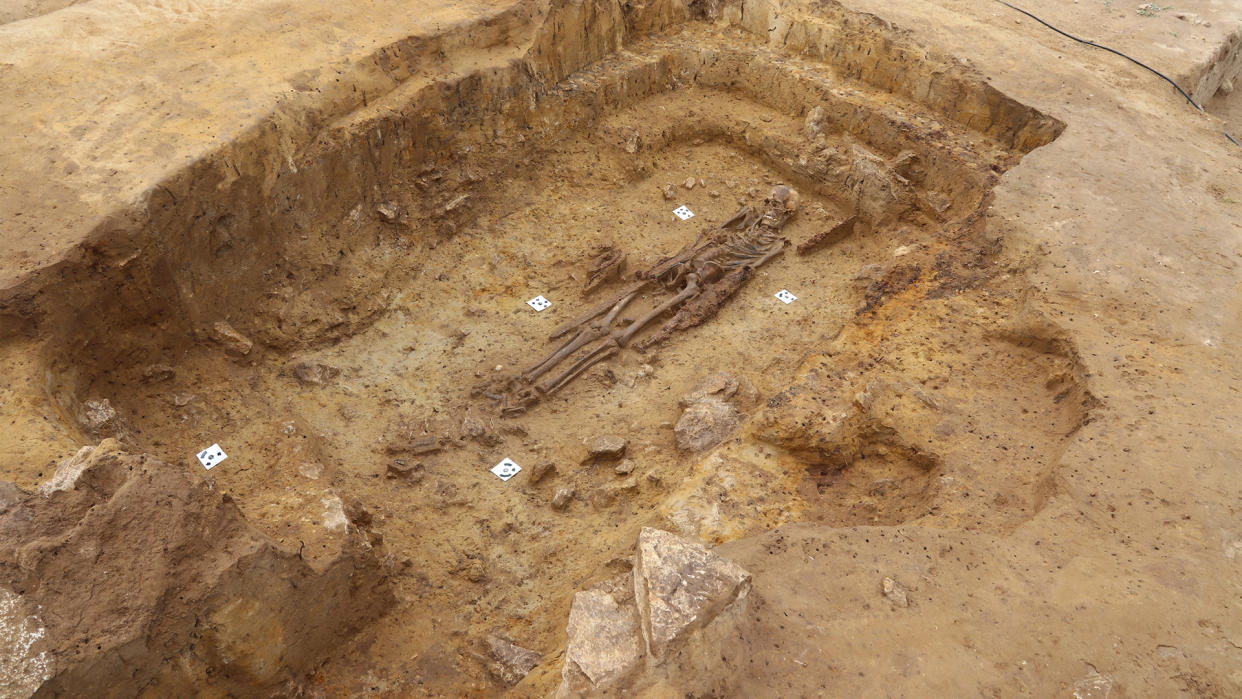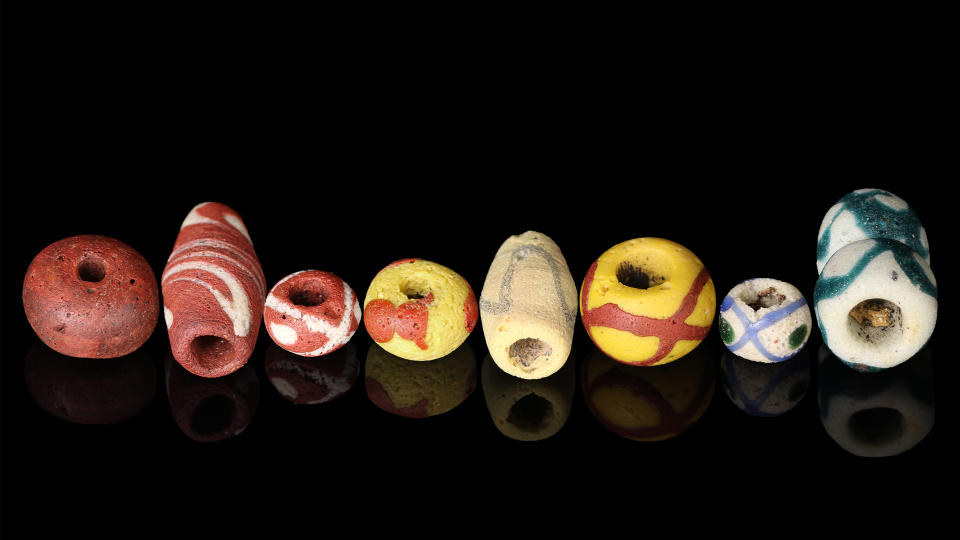Early medieval warrior found buried with his weapons in Germany

Archaeologists in Germany have discovered the grave of a Frankish warrior who was buried with his weapons and shield more than 1,300 years ago.
The weapons include a spatha, a long sword based on cavalry swords of the late Roman Empire.
The deceased appears to be a man who died between the ages of 30 and 40, probably in the seventh century, the archaeologists found.
The warrior was also buried with a short sword for slashing, called a seax, with an iron blade and a bronze handle; a heavy iron knife; and a spear, of which only the iron point survived. The remains of a shield made mainly of wood were also found; only the metal "boss" at the center survived.
The team found the grave in June during a dig at an early medieval cemetery that archaeologists have been excavating since March. The site is in the town of Ingelheim, which lies beside the Rhine River and about 25 miles (40 kilometers) west of Frankfurt.
Related: French farmer finds rare coin featuring Charlemagne just before his death



Excavation manager Christoph Bassler, an archaeologist at Ingelheim's Kaiserpfalz Research Center, told Live Science that a cemetery there was used from roughly the fifth to the eighth centuries by nearby settlements and farmsteads.
Several of the nearby burials had been looted at a later time, but the thieves seemed to have missed the warrior's grave, he said.
While the individual was among the wealthier residents of his community, "he was by no means filthy rich," Bassler said; his weapons were of high quality, but there was no sign in the grave of the sought-after imported goods that only the most affluent could afford.
Frankish burial




The archaeologists think the grave dates to the early Merovingian period, between about 500 and 750 — an early stage of the Germanic-speaking empire of the Franks, which after 768 was ruled by Charlemagne (Charles the Great) and his Carolingian descendants.
X-rays of the warrior's sword belt show that silver wires were inlaid in its iron buckle and fittings — a style that "experienced its zenith during the seventh century," Bassler said. He and his colleagues plan to radiocarbon-date the burial's organic remains and analyze the bones for evidence of battle wounds, to see if they can determine a cause of death.
The narrowed and slightly raised shoulders of the skeleton — known as "coffin posture" — show the warrior was buried in a coffin, although none of its wooden remains have survived.
Bassler said the spatha in the grave was the warrior's main weapon. The entire sword measures about 37 inches (93 centimeters) from its pommel to its tip, and the blade is about 30 inches (75 cm) long. Such swords were used by horse-mounted troops during the late Roman Empire, as they needed a sword longer than the Roman gladius to fight efficiently, Bassler said. These swords later became standard in warfare, and the term "spatha" — the origin of the English words "spatula" and "spade" — is now used for the typical double-edged, one-handed swords used throughout early medieval Europe, he said.
Ancient Ingelheim
The Frankish warrior seems to have fought on foot, because the grave did not contain any sign of spurs or other equipment for horses, Bassler said.
RELATED STORIES
—'Octagonal' sword from Bronze Age burial in Germany is so well preserved, it shines
—Crusader sword found in Holy Land was bent, possibly in naval battle, X-rays reveal
—7.5-foot-long sword from 4th-century Japan may have 'protected' deceased from evil spirits
He added that the area was near the Rhine and the Roman-era settlement of Mogontiacum — now the city of Mainz — and that it was chosen as a site for one of Charlemagne's imperial palaces in the eighth century.
Evidence from the other graves in the cemetery revealed that the people buried there were expert crafters with a sense for art and ornamentation.
"Glass was commonly used for drinking vessels, even by the less prosperous, and made into ornate beads, which were worn by women in colorful necklaces," Bassler said. "Fabric was spun and woven at home, and often in extraordinarily fine weave."

